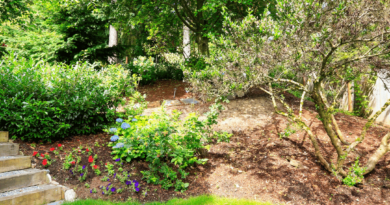The Cultural Significance of Indigenous Kenyan Trees in Traditional Ceremonies and
Indigenous trees play a significant role in the cultural ceremonies and rituals of the various ethnic groups in Kenya. These trees, which have been part of the local ecosystem for generations, hold deep spiritual and symbolic meanings for the communities that use them.
One of the most widely revered trees in Kenya is the fig tree, known locally as the “Mugumo” tree. The Mugumo tree is considered sacred by the Kikuyu people, the largest ethnic group in Kenya, and is often used in traditional rituals and ceremonies. The tree is believed to be a link between the human and spiritual worlds, and it is said that the spirits of deceased ancestors reside in the tree’s branches. The Kikuyu people hold an annual ceremony called “Ngai” under the Mugumo tree, where they offer sacrifices to the spirits of their ancestors and ask for blessings for the coming year.
Another important tree in Kenyan culture is the “Omusambi” tree, which is used by the Luo people in traditional healing rituals. The tree’s bark is made into a tea, which is believed to have medicinal properties and is used to treat a variety of ailments, including fever, stomachache, and even HIV/AIDS. The Luo people also believe that the Omusambi tree has spiritual powers and that it can protect them from harm.
The “Majani ya miti” tree, also known as the “food of the trees,” is considered sacred by the Meru people. The tree’s leaves are believed to have healing properties and are used to treat a variety of illnesses, including fever, diarrhea, and stomachaches. The Meru people also hold a traditional ceremony called “Mbura” under the Majani ya miti tree, where they offer sacrifices to the spirits of the tree and ask for blessings for the coming year.
there are several indigenous trees with cultural significance among the Maasai people of Kenya.
One such tree is the “Enkang” tree, which is considered sacred by the Maasai. The tree is believed to have protective powers and is often used in traditional rituals to ward off evil spirits. The Maasai also believe that the Enkang tree has healing properties and that its leaves can be used to treat a variety of illnesses. The tree is also used as a source of shade and a place for the community to gather.
Another tree that is important to the Maasai is the “Oltorot” tree, which is considered sacred and is often used in rituals to mark important life events such as births and marriages. The tree’s bark is also believed to have medicinal properties and is used to treat a variety of ailments, including fever, stomachache, and even HIV/AIDS.
The “Ololpakip” tree is also considered sacred by the Maasai, and is often used as a place for rituals and ceremonies. The tree is believed to have protective powers and is said to be able to ward off evil spirits.
In addition to these specific trees, many other indigenous trees in Kenya hold cultural significance and are used in traditional ceremonies and rituals. For example, the “Mugumu” tree is considered sacred by the Kamba people, the “Mugumo” tree is revered by the Kikuyu people, and the “Mugumo” tree is honored by the Embu people.
The “Mukuyu” tree, also known as “African baobab”, is considered sacred by the Luhya. The tree is believed to have protective powers and is often used in traditional rituals to ward off evil spirits. The tree is also used as a source of shade and a place for the community to gather. Its leaves, bark and roots are also used for medicinal purposes to treat various ailments such as headaches, skin infections, and diarrhoea.
Another tree that is important to the Luhya is the “Muvule” tree, which is considered sacred and is often used in rituals to mark important life events such as births and marriages. The tree’s bark is also believed to have medicinal properties and is used to treat a variety of ailments, including fever, stomachache, and even HIV/AIDS.
The “Mugumo” tree is also considered sacred by the Luhya, and is often used as a place for rituals and ceremonies. The tree is believed to have protective powers and is said to be able to ward off evil spirits. It’s also used as a place of worship and it’s believed to be a link between the human and spiritual worlds.
The “Sagalla” tree, also known as the “candelabra tree,” is considered sacred by the Kalenjin. The tree is believed to have protective powers and is often used in traditional rituals to ward off evil spirits. The tree is also used as a source of shade and a place for the community to gather. Its leaves, bark and roots are also used for medicinal purposes to treat various ailments such as headaches, skin infections, and diarrhoea.
Another tree that is important to the Kalenjin is the “Sabiny” tree, which is considered sacred and is often used in rituals to mark important life events such as births and marriages. The tree’s bark is also believed to have medicinal properties and is used to treat a variety of ailments, including fever, stomachache, and even HIV/AIDS.
The “Sondany” tree is also considered sacred by the Kalenjin, and is often used as a place for rituals and ceremonies. The tree is believed to have protective powers and is said to be able to ward off evil spirits. It’s also used as a place of worship and it’s believed to be a link between the human and spiritual worlds.
In conclusion, the Sagalla, Sabiny, and Sondany tree are considered sacred by the Kalenjin people, who have spiritual and cultural significance, and are used in traditional rituals and ceremonies.
In conclusion, indigenous trees play a vital role in the cultural ceremonies and rituals of the various ethnic groups in Kenya. These trees hold deep spiritual and symbolic meanings for the communities that use them and are an important part of their cultural heritage.
References:
- “Indigenous Trees of Kenya: A Guide to their Identification, Culture and Use” by J.M. Githinji and L.E. Wangui
- “The Cultural Significance of Indigenous Trees in Kenya” by K. Mwaura and P. Gathitu
- “Traditional Healing Practices among the Luo of Kenya” by J. Owino and P. Okoth
- “The Cultural Significance of Indigenous Trees among the Maasai of Kenya” by M. Ole Ntutu and J.K. Ntoyier
- “Maasai Ecological Knowledge and Management of Trees in Laikipia, Kenya” by J. Ole Kamwaro.
- “The Cultural Significance of Indigenous Trees among the Luhya of Kenya” by P. Wamalwa and E. Muliro
- “Traditional Ecological Knowledge and Management of Trees among the Luhya of Western Kenya” by C.W. Oduor and J.K. Wanyama.
- “The Cultural Significance of Indigenous Trees among the Kalenjin of Kenya” by K. Kipchumba and J. Kibet
- “Traditional Ecological Knowledge and Management of Trees among the Kalenjin of Western Kenya” by J. Kiptoo and C. Koech.




